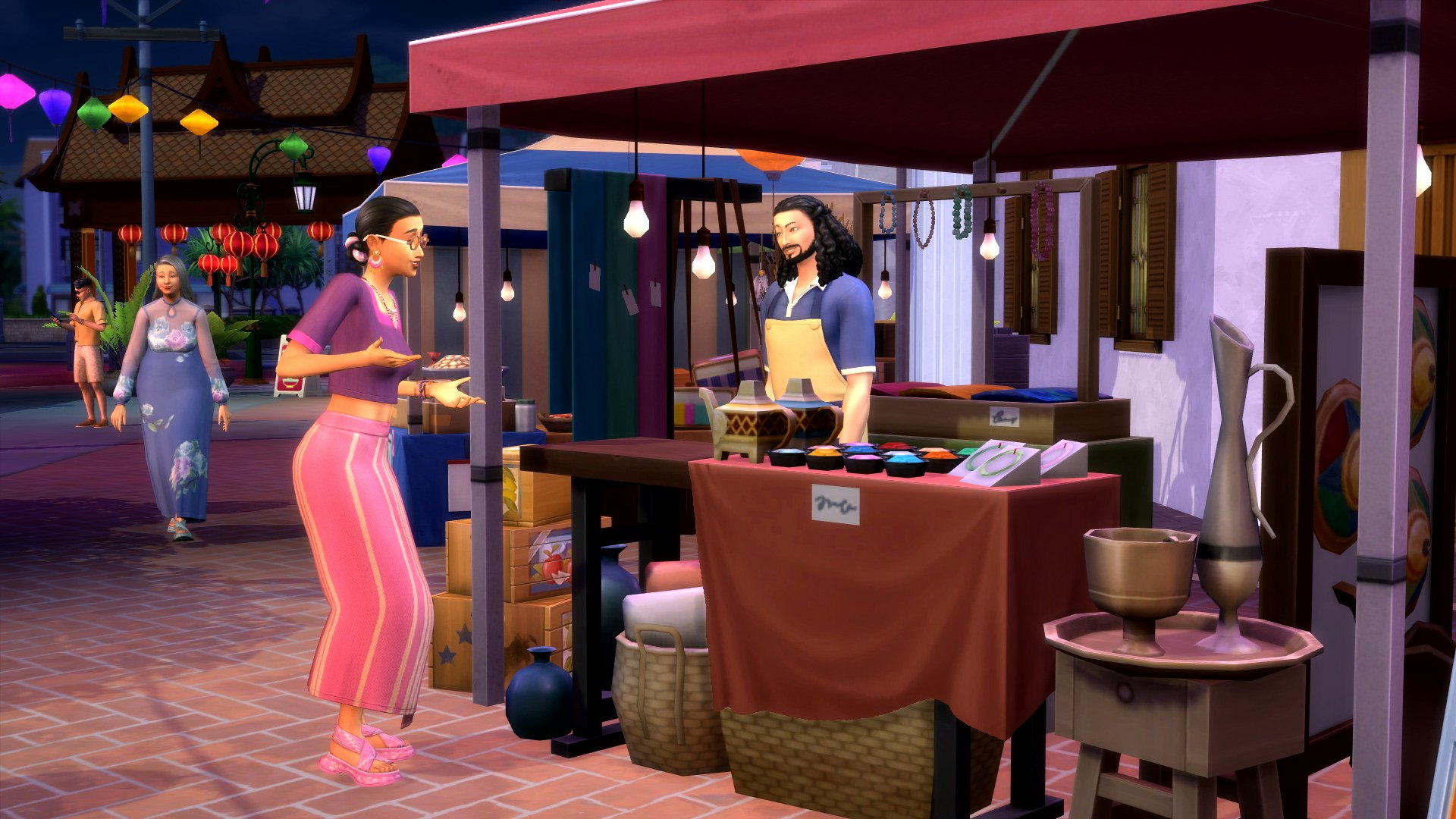
Since its initial launch in 2000, The Sims has always walked a fine line between imitating real life and offering a fun escape. Sure, you can carefully guide your simulated family to happiness and success, but isn’t it more fun to throw them in the swimming pool and delete the ladder?
The franchise’s latest update leans hard into the game’s warring concepts. In The Sims 4: For Rent, you can finally be a landlord, building out an empire of up to six units. Will you be a benevolent property manager or the landlord from hell? The choice is yours, but For Rent makes it easy to inflict mold, jack up the rent, and even “unlawfully” evict tenants.
“We wanted to give [players] the full range,” Sims 4 art director Mike O’Connor tells Inverse. “We give you the tools. You can tell a benevolent story, you can tell a bad story. We give you the stained walls if you want it. If you want the bad state of a water heater, you can use it.”

But while the landlording component of The Sims 4: For Rent is drawing plenty of attention, there’s another piece of the new expansion that’s gone sorely overlooked. Underpinning the game’s capitalism simulator is the ambitious Southeast Asian-inspired world of Tomarang that brings new cultures, foods, and activities to the 23-year-old franchise.
As a longtime Sims player who’s of half-Filipino heritage, I was pretty stoked when For Rent was announced. Even today, Southeast Asian representation still feels very rare in any kind of Western entertainment. So the idea of seeing my culture represented in my favorite video game franchise was incredibly exciting.
However, I still had some reservations. Would The Sims 4: For Rent accurately predict the nuances of the culture it claimed to represent, or would it flatten the varying cultures of Southeast Asia into a bland simulation? To find out, I talked to the team behind For Rent about what went into creating the world of Tomarang.
WELCOME TO TOMARANG

Tomarang consists of two neighborhoods: the busy and vibrant Morensong and the more relaxed Koh Sahpa.
To bring Tomarang to life, the team worked in collaboration with Sila Consulting and cultural consultant Jason Chu, a rapper, educator, and social justice advocate. Chu’s family is ethnically Chinese, and his mother and father were raised in Malaysia and Thailand, respectively. As a result, he grew up in a household infused with Southeast Asian foods, stories, and traditions. He also spent time in Bangkok as an adult.
Chu tells Inverse that making For Rent Southeast Asian-inspired was a no-brainer.
“It makes so much sense culturally because it actually reflects something that's really common in Southeast Asia,” Chu says of the expansion’s multi-unit dwellings. “It also creates opportunities for new drama or new relationships, which to me is very much interrelated with the structure and the sort of social architecture of Southeast Asian communities.”
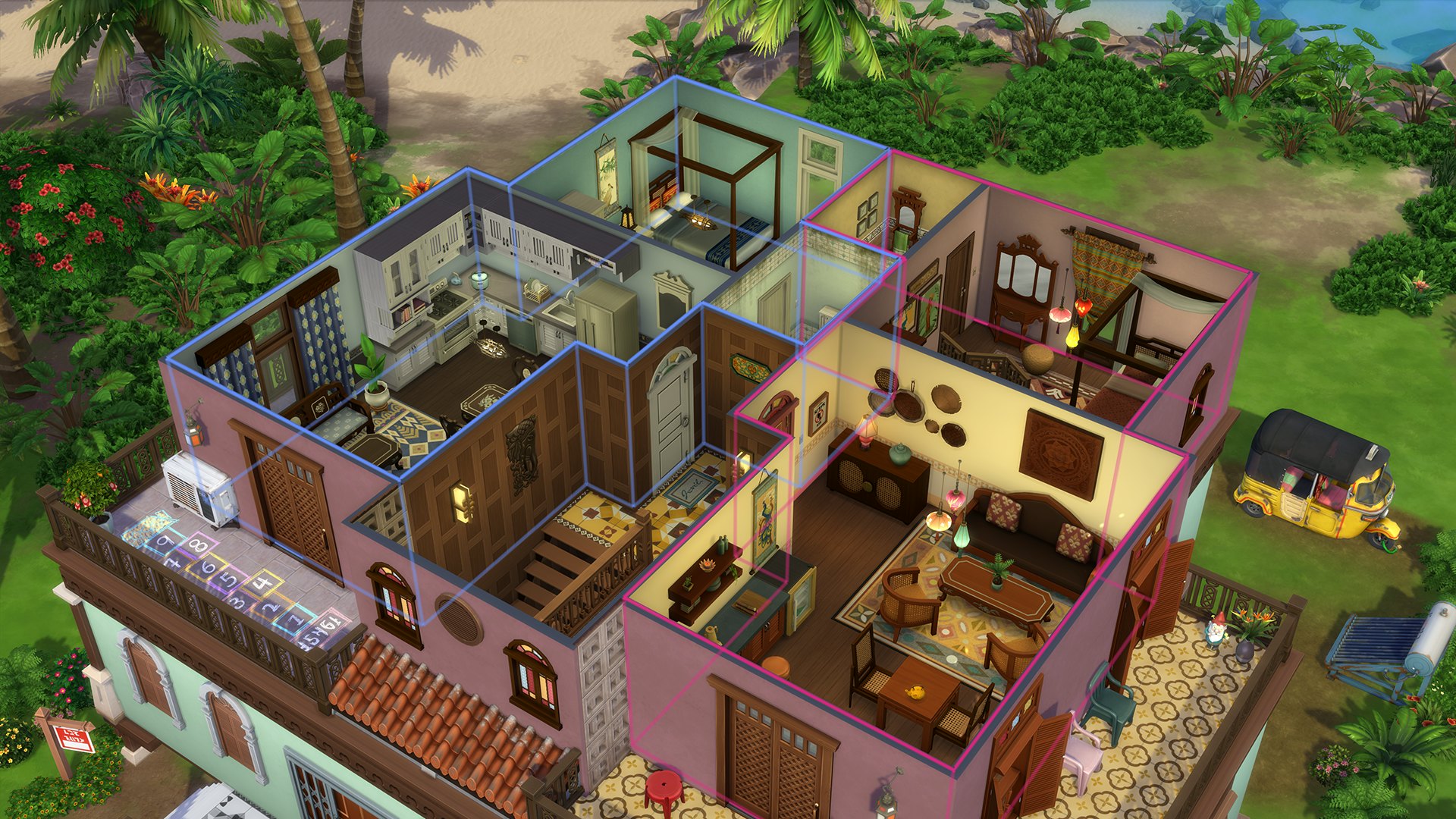
In addition to multi-unit properties, Tomarang introduces numerous Southeast Asian-inspired objects, activities, traits, and gameplay elements. There’s rattan furniture, squat toilets, pressure cookers, “no shoes” signs, and even a very specific red potty for little Sims. The potty was suggested by concept artists on the team who recalled it from their childhoods.
To pass the time, Sims can visit the Tiger Sanctuary, host a potluck, hang out at the Botanical Gardens, or play a game of Hopscotch or marbles. Players can also check out the Spirit Houses, which are modeled after the real-life traditional structures found across Southeast Asia.
“This isn't just a cosmetic or an aesthetic thing drawn into the neighborhood model,” Chu says of the Spirit Houses. “It’s actually interactable. People can leave offerings.”
Having interactable elements is a crucial component when it comes to making players feel like they’re living and breathing this world. While I found certain rabbit holes like the Tiger Sanctuary a bit disappointing, having features like Spirit Houses helps Tomarang feel more authentic.
LET’S EAT
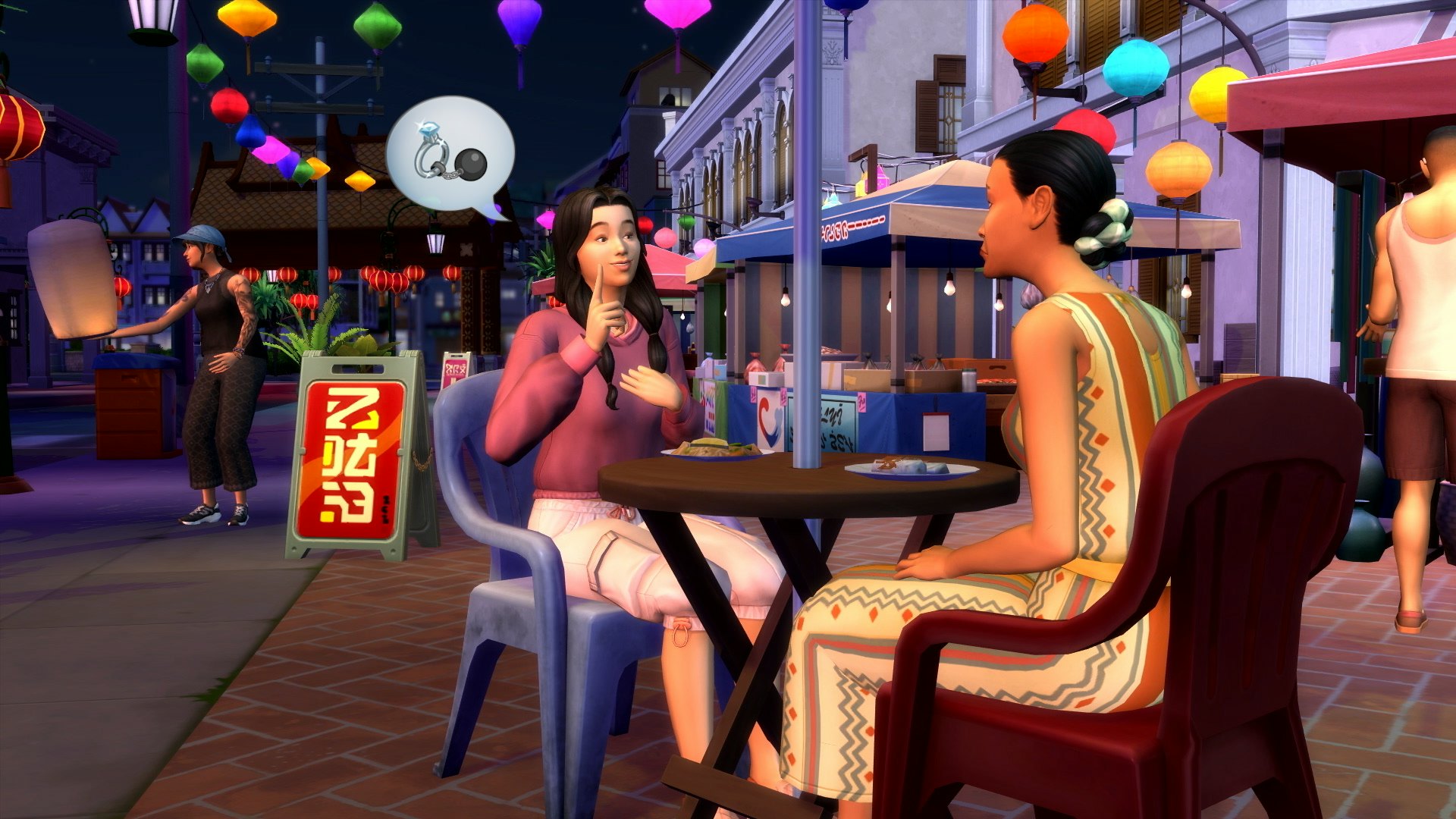
Another highly-anticipated aspect of For Rent is the addition of rice cookers, a first for the Sims universe. Honestly, it’s kind of astounding that they haven’t existed in the game up until this point — I can’t fathom ever having a kitchen without one.
“There were some questions of what kind of rice cookers you would actually see in, you know, a young poor kid fresh out of college, all the way to [a] nice, upper-class, multi-family dwelling,” Chu says. “You're gonna have five versions, at every price point, every level of fanciness. And every level of decoration in each one of them is gonna have, like, six colors.”
Additionally, Tomarang introduces the Night Market, where Sims can check out crafts and food stalls. This was the feature I was most excited — and nervous — about. I worried the game might lean too much into only “mainstream” Southeast Asian food, but there’s quite a variety of options. Some of the traditional dishes available for purchase include pancit bihon (my personal favorite), bánh xèo, Burmese samosa soup, halo-halo, tofu pad thai, and Malaysian satay, to name a few.

O’Connor emphasizes the importance of details when it comes to the food: “‘It looks too brown. This should look toasted. Let’s put a little more carrots in there. Let’s add some color.’”
Chu describes the process of collaborating with the developers and art team on the Night Market as “bouncing the ball back and forth” to get every little thing from the food to the stalls just right.
“They sent me something that had the right spirit, and then I helped tweak it to make it a little more authentic,” he says. “They showed me sketches of the initial layout and said, ‘Hey, here's kind of what we've worked on, what we're imagining, but please let us know how things look.’ The first pass was really great. … But there were just those little [things] like, ‘Hey, the stalls would be a little more crowded,’ or ‘These goods wouldn't just be out on tables; they'd be on blankets on the floor.’”
O’Connor says one of the biggest “technical” challenges was making the Night Market feel “bustling” while still adhering to strict system restrictions, like the limits on how many NPCs can be present at a given time. Again, it all came down to details.
Chu chimes in: “There's a lot that they did with texture, location, props, and objects that'll make these locations feel really bustling and full and alive. Even though it's just the same number of characters on screen as any other world.”
THE BIG PICTURE
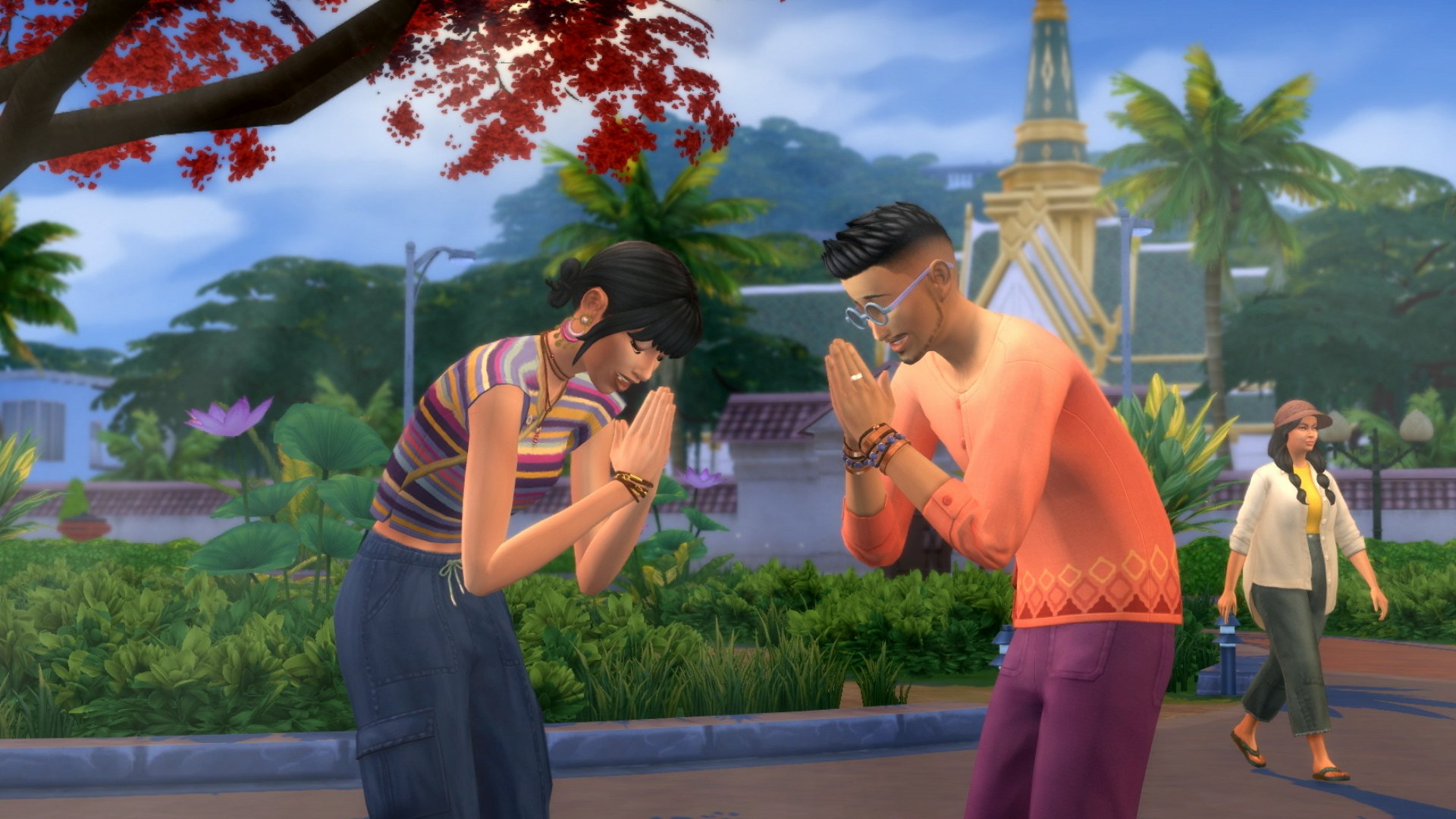
Chu emphasizes that Tomarang is purposefully not meant to represent any single Southeast Asian group in particular. “You might not see everything from your culture incorporated,” he says. “But you'll feel seen, and you'll feel known in this space.”
“We try not to do ‘direct,’” O’Connor adds. “You can definitely say [something’s] got a Thai ‘bent’ to it … But we don't want to exclude anybody. We're not trying to pin [only] one thing down. Hopefully, people can see themselves in it.”
But can one world represent of so many different cultures? Often, it feels like Western media is quick to try to lump all Asians into one category despite being an incredibly diverse group. There are countless distinct groups within Southeast Asia alone; someone who grows up in the Philippines isn’t going to have the same experience as someone from Singapore or Vietnam.
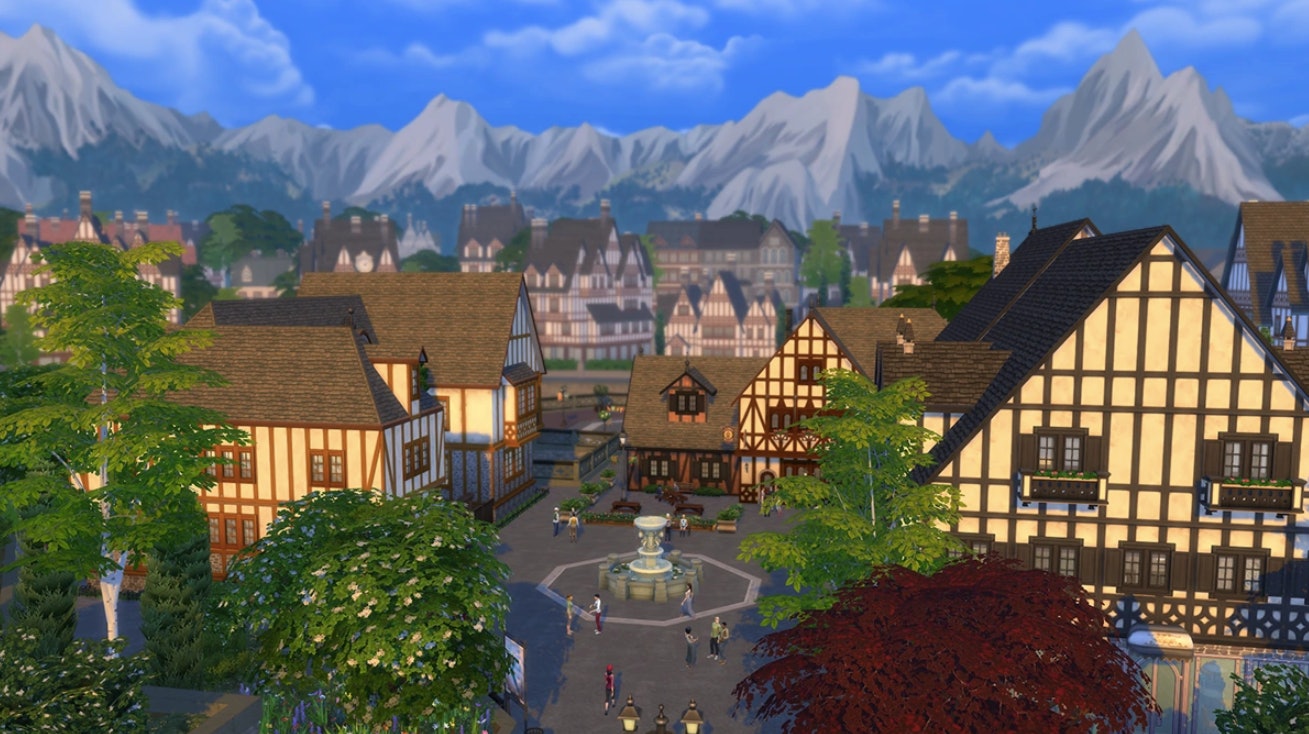
However, it’s also true that The Sims worlds have always blended different cultures and countries. For instance, the Get Together expansion takes place in Windenburg, a European-coded location with strong hints of Germany and Denmark. Meanwhile, Snowy Escape’s Mt. Komorebi is Japan-inspired, but a few aspects of this pack were changed after Korean fans pointed out problematic elements such as insensitive patterns on clothing and the historical context of bowing in front of shrines.
While Tomarang is certainly inspired by Southeast Asia, Chu says The Sims is ultimately still meant to be a fictional escape. After all, we’re talking about a game where players can now live out their wildest, er, landlord fantasies.
“One thing that I heard the development team speak about [was] wanting to always stay on the line where things are cute and fun and light,” he says. “Instead of feeling like there's negativity, whether that's in terms of stereotypes or hitting a little too close to real life.’”







